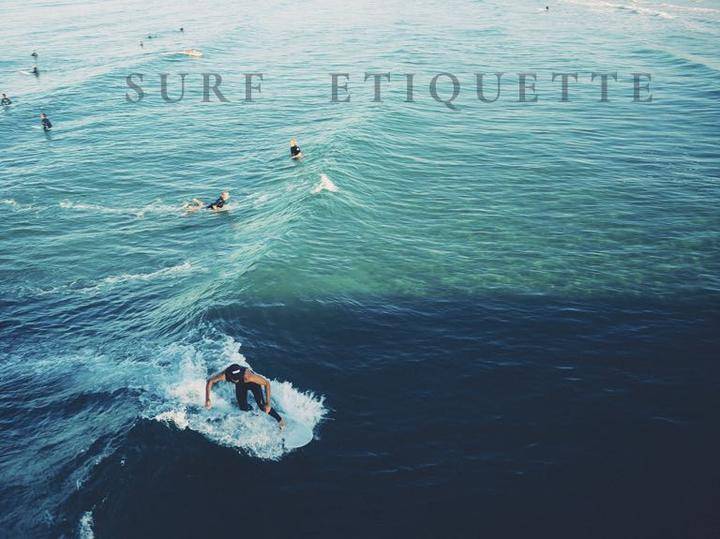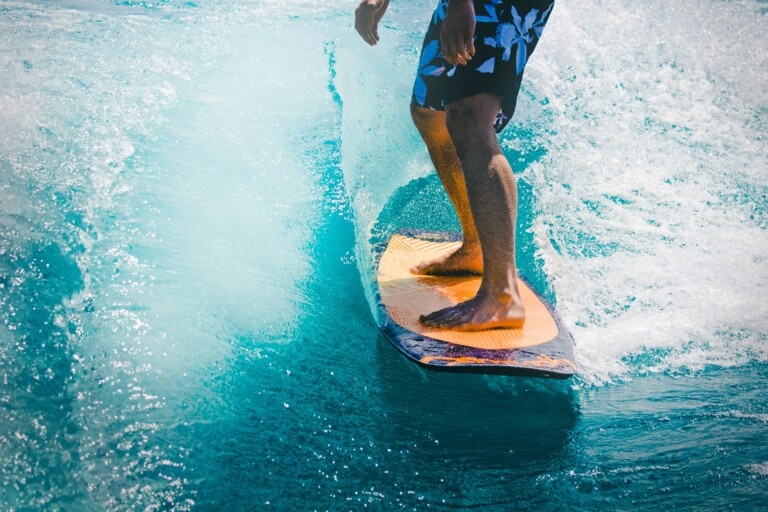THE DO’S AND DON’TS OF SURFING
We all know that it can be intimidating to learn something new. We might not know the correct rules and tricks when we are first introduced and don’t want to look ridiculous trying to figure it out. While surfing is something I would recommend to everyone because it is worth looking ridiculous, there are some rules that should be followed when paddling out. Surf etiquette is something that all surfers, new and old should know in order to make sure that everyone in the water stays safe and has a good time. If you are new to this sport, don’t worry because the instructors at San Diego Surf School have composed a list of do’s and don’ts for surfing so you can join the line up without looking like a kook.
– RULES OF THE LINEUP
CLOSEST TO THE PEAK
The surfer closest to the peak has the right of way on the wave. In other words, whoever has paddled and caught the wave at the highest part of the wave has the right of way.
– DO’S
LOOK BEFORE PADDLING
Before you paddle into a wave, look to make sure you’re not cutting off another surfer. A good trick is to look both ways as if you were crossing a street. Look left and right so you’re not getting into anyone’s way.
YIELD
If you paddle into a wave and notice that another surfer has caught the same wave and is heading your way, back off so they can continue their ride and you won’t run the risk of cutting them off.
RIDE IN THE CORRECT DIRECTION
Waves usually favor different shoulders depending on the break and day. The wave will break either left or right so ride the way that it’s breaking. Determine where the shoulder is and ride accordingly. If the wave is breaking left, take a left and if the wave is breaking right, turn right to ride the shoulder. Going the correct way will help avoid collisions because all surfers will be riding in the same direction rather than running into each other.
COMMUNICATE
Sometimes it’s a little hard to tell which way the wave is breaking and on good days waves will offer both a left and a right. If this is the case, talk to the surfers around you and ask which way they are going. This will also lessen the chance of collisions in the water.
BE RESPECTFUL
Remember to be considerate of others in the water. Everyone is paddling out to have fun. It’s ok to mess up but apologize and learn from your mistakes!
– DON’TS
BE A KOOK
“What’s a kook?” you might ask. Just because you’re a beginner doesn’t make you a kook. A kook is a surfer with an exaggerated perception of their surf skills. Their lack of surf knowledge, especially concerning surf etiquette, usually interferes with other surfer’s fun in the water and can aggravate or endanger others.
When you paddle out you should at least know the basics of surfing. This will keep you and everyone around you safe and prevent people from getting mad. Making sure you’re aware of yourself and your surroundings will make the experience better for everyone!
DROP-IN ON SOMEONE
Make sure not to drop in on anyone and cut them off when they’re riding a wave. This is probably one of the most common mistakes that can aggravate other surfers, especially on a good surf day.
GET IN THE WAY
When you’re paddling out to join the line up, don’t get in the way of other surfers. To avoid this, check to see where people are surfing in the water. Be aware of the way they’re turning and plan a path to paddle out without impeding others from catching waves.
DITCH YOUR BOARD
Don’t ditch your board when you’re surfing. Make sure you have control of your board and don’t let go of it in the water. Sometimes when people are stuck in the impact zone and a wave is crashing on them, they might have the urge to let go of their board. Instead you should try your best to keep control of your board and either duck dive under the wave or do a turtle roll on your longboard while gripping tightly by the nose. By doing this you will avoid hitting yourself or others with your board.
BARK AT PEOPLE
If someone messes up or doesn’t know better, you don’t have to be mean in order to communicate with them. While communication is important there is a difference between talking to another surfer and barking at them. Don’t yell or be rude if someone makes a mistake. Remember that everyone is surfing at a different level and many are still learning so try your best to be nice to other surfers in the water.
These rules are an important part of the sport so please take them seriously so that everyone in the water can stay safe. If you’re new to surfing and are trying to learn a little more, review these do’s and don’ts before you head into the water. Once you arrive in the line up remember what you’ve learned but most importantly, have fun!











